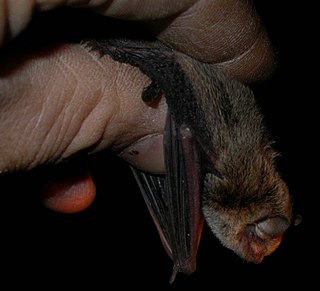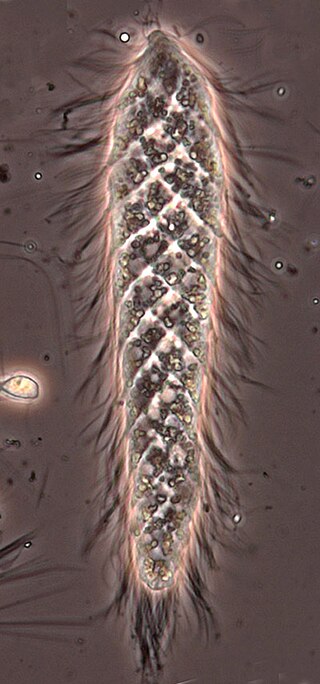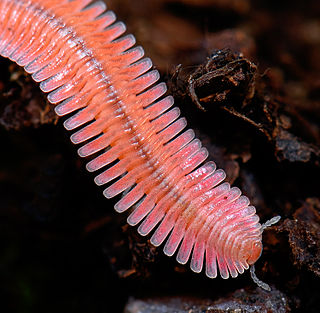
Chevrotains, or mouse-deer, are diminutive, even-toed ungulates that make up the family Tragulidae, and are the only living members of the infraorder Tragulina. The 10 extant species are placed in three genera, but several species also are known only from fossils. The extant species are found in forests in South and Southeast Asia; a single species, the water chevrotain, is found in the rainforests of Central and West Africa. They are solitary, or live in loose groupings or pairs, and feed almost exclusively on plant material. Chevrotains are the smallest hoofed mammals in the world. The Asian species weigh between 0.7 and 8.0 kg, while the African chevrotain is considerably larger, at 7–16 kg (15–35 lb). With an average length of 45 cm (18 in) and an average height of 30 cm (12 in), the Java mouse-deer is the smallest surviving ungulate (hoofed) mammal, as well as the smallest artiodactyl. Despite their common name of "mouse deer", they are not closely related to true deer.

Luzula is a genus of flowering plants in the rush family Juncaceae. The genus has a cosmopolitan distribution, with species occurring throughout the world, especially in temperate regions, the Arctic, and higher elevation areas in the tropics. Plants of the genus are known commonly as wood-rush, wood rush, or woodrush. Possible origins of the genus name include the Italian lucciola or the Latin luzulae or luxulae, from lux ("light"), inspired by the way the plants sparkle when wet with dew. Another etymology sometimes given is that it does derive from lucciola but that this meant a mid-summer field, or from the Latin luculus, meaning a small place; the same source also states that this name was applied by Luigi Anguillara in 1561.

Myxobolidae is a family of myxosporean parasites which typically infect freshwater fishes, and includes the economically significant species, Myxobolus cerebralis. They have been shown to have a complex life cycle, involving an alternate stage in an invertebrate, typically an annelid or polychaete worm.

Didiereaceae is a family of flowering plants found in continental Africa and Madagascar. It contains 20 species classified in three subfamilies and six genera. Species of the family are succulent plants, growing in sub-arid to arid habitats. Several are known as ornamental plants in specialist succulent collections. The subfamily Didiereoideae is endemic to the southwest of Madagascar, where the species are characteristic elements of the spiny thickets.

Chaos is a genus of single-celled amoeboid organisms in the family Amoebidae. The largest and most-known species, the so-called "giant amoeba", can reach lengths up to 5 mm, although most specimens fall between 1 and 3 mm.

Plectranthus is a genus of about 85 species of flowering plants from the sage family, Lamiaceae, found mostly in southern and tropical Africa and Madagascar. Common names include spur-flower. Plectranthus species are herbaceous perennial plants, rarely annuals or soft-wooded shrubs, sometimes succulent; sometimes with a tuberous base.
Fibrobacterota is a small bacterial phylum which includes many of the major rumen bacteria, allowing for the degradation of plant-based cellulose in ruminant animals. Members of this phylum were categorized in other phyla. The genus Fibrobacter was removed from the genus Bacteroides in 1988.

Vespadelus is a genus of Australian bats in the family Vespertilionidae.

Asaphestera is an extinct genus of a tetrapod described on the basis of fossils from the Carboniferous of the Joggins locality in Nova Scotia, Canada. It was originally described as an undetermined lepospondyl and subsequently classified as a microsaur within the family Tuditanidae. A study published in May 2020 found that specimens referred to Asaphestera represented several unrelated species. Steen (1934)'s original species name Asaphestera platyris was retained for a skull which has been re-evaluated as the earliest known synapsid.

Dinenympha is a genus of Excavata.
Armatimonadota is a phylum of gram-negative bacteria.

Climacostomum is a genus of unicellular ciliates, belonging to the class Heterotrichea.
Krasilnikovia cinnamomea is a bacterium species in the genus Krasilnikovia.

Platydesmida is an order of millipedes containing two families and over 60 species. Some species practice paternal care, in which males guard the eggs.
Hanceola is a genus of flowering plants in the mint family, Lamiaceae, first described with this name in 1929. The entire genus is endemic to China.
- Hanceola cavaleriei(H.Lév.) Kudô - Guizhou
- Hanceola cordivataY.Z.Sun - Guizhou, Sichuan
- Hanceola exsertaY.Z.Sun ex C.Y.Wu - Fujian, Guangdong, Hunan, Jiangxi, Zhejiang
- Hanceola flexuosaC.Y.Wu & H.W.Li - Guangxi
- Hanceola labordei(H.Lév.) Y.Z.Sun - Guizhou
- Hanceola mairei(H.Lév.) Y.Z.Sun - Yunnan
- Hanceola sinensis(Hemsl.) Kudô - Guangxi, Guizhou, Hunan, Sichuan, Yunnan
- Hanceola tuberiferaY.Z.Sun ex G.Y.Wu - Sichuan
Dielsia is a genus of plants in the Restionaceae described as a genus in 1904. There is only one known species, Dielsia stenostachya, endemic to Western Australia.

Rostrinucula is a genus of flowering plants in the family Lamiaceae, first described as a genus in 1929. It has two known species, both endemic to China.
Rubiteucris is a genus of plants in the family Lamiaceae, first described in 1929. It is native to southern China, the Himalayas, and Myanmar.

Suzukia is a genus of plants in the family Lamiaceae, first described in 1930. It contains two known species, native to Taiwan and the Ryukyu Islands.












